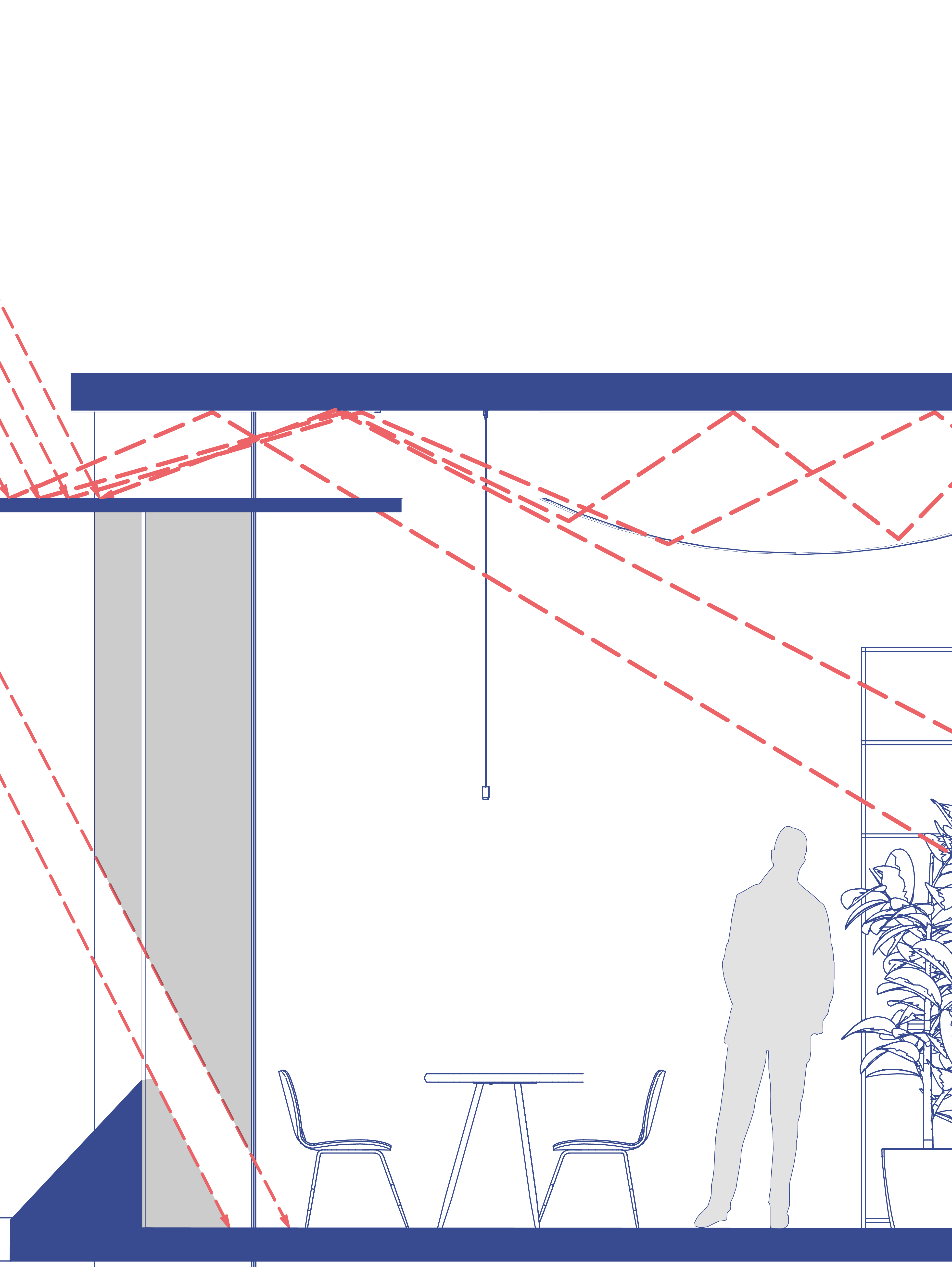ANIDOLUX

Category
Daylight in buildings - Region 3: The Americas
Students
Luis Mora
Karolay Salazar
Teacher
Andrea Sancho
School
Architecture School, Veritas University
Country
Costa Rica
Download
Download ↓
Due to their location, tropical countries are privileged to have an everyday influence of one of the most important resources on the planet: the sun. Even though it can be cloudy or rainy, these countries have a significant number of hours of sunlight throughout the year. It depends on the designer, whether it can be harnessed for good or cause overheating and excessive glare. This problem causes users of interior space to block the entrance of light by adding curtains, in the hours of major solar incidence and even turning artificial lights, unfortunately, it has become evident that most designers in this latitude forget that the use of natural light is fundamental for health and well-being inside buildings.
This trend of shading is associated with the idea that blocking the entrance of sunlight is equivalent to obtaining a greater sensation of thermal comfort for users. However, they are not considering visual comfort and the use of indirect sunlight to be a valuable resource, which could prevent the use of artificial light during the daytime in a tropical country.
The solution to internal temperature rise and low illuminance inside is usually solved by active strategies, such as the use of AC and artificial lights., The lack of natural light can affect visual comfort, reduce people’s productivity and affect their circadian cycle. In addition, the use of AC has shown more than ever, in these years of a pandemic the easy transmission of diseases when having several people working under these parameters.
Implementing mechanisms that have a high energy consumption during daytime hours is unnecessary. If energy sources are not clean, designers are contributing to the pollution of the planet and increasing global warming.
On the other hand, the solution of tropical architecture has been sold in the wrong way, believing that placing louvers is the only solution for critical facades or applying curtain walls with special glazing to reduce overheating (and sunlight as well). We have to start thinking of better solutions for users in working environments, that let them see the outside surroundings and have the benefits of sunlight in their physical and mental health.
We think a solution would be an anidolic collector, which in the field of optics is based on the efficient transfer of light. ANIDOLUX is a system based on geometry that promises to be a solution to the lack of natural light in interior spaces. The use of these anidolic blinds makes it possible to illuminate with indirect lightingfarthest surfaces.
Its operation is based on the geometry of a stainless-steel profile that reflects the sun’s rays with precision, in a series of angles previously studied to achieve its optimal operation as a “collector” redirecting the rays and reflecting them on the ceiling. By achieving this reflection, the light that enters does not dazzle users and illuminates surfaces uniformly and indirectly.
At the same time, the ANIDOLUX system allows partial visibility to the outside of the building and contributes to the shading of the spaces without eliminating the rays of light.
The application of these elements is a way to play with the variability of lighting in poorly designed spaces. Also, it is a critique of the existing design processes, as having to use these devices means that something went wrong, or was not investigated, during the architectural design.
For this reason, an intervention is carried out on the west facade of the analyzed building, to demonstrate how indirect natural light can be used in office buildings in tropical countries, with visual comfort standards applied. The intervention consists of applying an overhang, with a highly reflective material such as aluminum or stainless steel to shade the glass facade and redirect the rays to the ceiling of the building, where this light will meet again with the aluminum surface ceiling to continue redirecting the light indirectly into the interiors.

































